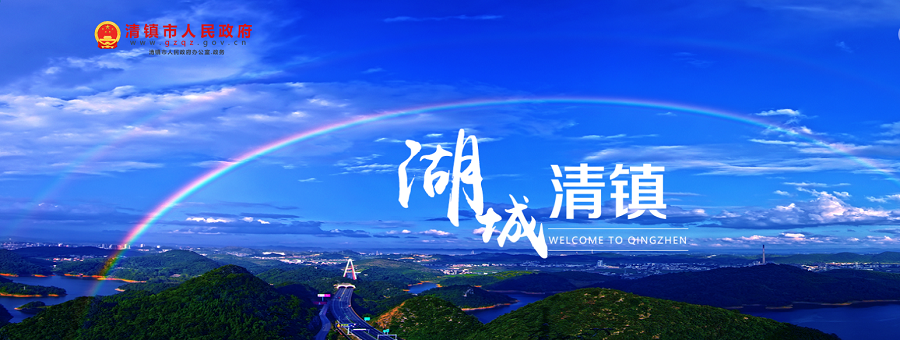- Profile Jurisdictions GOV DEPARTMENTS Cultures Travelling Educate
-
Qingzhen City is located in the hinterland of central Guizhou, on the northern slope of the Miaoling Mountains, on the southern bank of Yachi River in the middle of Wujiang River, located at 106°07~106°33R east longitude and 26°21~26°59R north latitude. It is connected to the Guanshan Lake District, Guiyang, the capital of Guiyang, the southeast, Huaxi District, the southeast and the southeast, and most of the Gui'an New District, and the southeast are connected to the mountains and rivers of Pingba District, Anshun City. The west, north and northeast are the Sancha River, Yachi River and Maotiao River as natural boundaries, facing Zhijin County, Qianxi County, Guiyang City, Xiuwen County and Baiyun District, respectively. The city is about 42.6 kilometers wide from east to west, about 55.7 kilometers long from north to south, and a total area of 1,386.6 square kilometers. The Municipal People's Government is stationed in Baihua Road, Baihua Community, 22 kilometers away from the Guiyang Municipal People's Government.

Humans lived and moved in Qingzhen City for a long time. The sites identified as late Paleolithic ruins include Chuandong in Tiaozichang Village, Zhanjie Town, and Leishenpo Cave in Yangyuan Village, Liuchang Miao Township; the sites from the late Paleolithic to Neolithic era include Liangshan Cave in the western suburbs of the urban area; the sites from the Shang and Zhou dynasties include Huangjia Cave in Xinqiao Village, Weicheng Town. The excavation and recognition of the above-mentioned sites extended the history of Qing Town to 10,000 years ago.

It was a ghost in the Qing Dynasty during the Yin and Zhou dynasties. It belonged to the ancient country of Jinghua during the Spring and Autumn Period. It belonged to the Great Night Country during the Warring States Period. It belonged to the county of Ji in the Han Dynasty. The Tang and Song dynasties were banned from Qingzhou. In the Yuan Dynasty, the Xuanwei Department of Yixi Buxue (Shuixi) was Liumuzexi. In the 23rd year of Hongwu in the Ming Dynasty (1390), the Qingwei was established, and in the third year of Chongzhen (1630), the town of Xiwei was established. On June 22, 26th year of the reign of Emperor Kangxi of the Qing Dynasty (July 30, 1687), Weiqing, Zhenxi and Hesheng and Weiwu were sacked, and the two places of Hesheng and Weiwu were merged to establish a county, taking over the "Qing" of Weiqing and the "Zhen" of Zhenxi, and named it Qingzhen County, and under the jurisdiction of Anshun Prefecture. At this point, the Qing town was built with a county and recorded in Chinese history.

In January of the first year of the Republic of China (1912), along the Qing system, the Qing Zhen County was still under the jurisdiction of Anshun Prefecture. In the third year of the Republic of China, Qingzhen belonged to Guixi Road. In the 9th year of the Republic of China, Guizhou laid off its roads, and Qingzhen County was directly under the province and ranked second-class county. In June 24, Guizhou Province implemented the administrative inspection district system, with 11 administrative inspection districts in the province, and Qingzhen was directly under the province.
In 1949, Qingzhen County was liberated and belonged to Guiyang Special Zone. After Guiyang Special Zone was renamed Guiding Special Zone, it belonged to Guiding Special Zone.
In 1956, it was transferred to Anshun Special Zone.
In 1958, it was designated as a suburb county in Guiyang.
In 1963, it returned to Anshun Special Zone.
In 1992, Qingzhen abolished the county and established a city.
In 1995, Qingzhen City was directly under the jurisdiction of Guizhou Province.
In 1996, Qingzhen City was entrusted by Guiyang City to be under the jurisdiction of Guizhou Province.
In 2002, Qinglong Street was newly built;
In 2003, Qinglong Street Office was established.
In 2011, a pilot program of grassroots system reform was implemented, and Hongxin Community and Xinling Community were established.
In 2012, the Qingzhen City was held to abolish the awarding ceremony for Qinglong Street and Community Service Center. The Hongta, Chaofeng and Baihua Community Service Centers were established. Baihua Lake Township was included in Guanshan Lake District. There are 14 townships (communities) in the city.
In 2014, the State Council agreed to establish Gui'an New District, and the 7 villages (communities) of Qingzhen City were transferred to Gui'an New District for trusteeship, bringing new development opportunities to Qingzhen City.
In 2020, Qingzhen City abolished seven communities, including Hongxin Community, Xinling Community, Hongta Community, Chaofeng Community, Baihua Community, Xiangcang Community, and Time Community, and integrated the above seven community areas, and established three streets, Qinglong Mountain, Binhu and Chaofeng.
contact details
Tel:00-86-0851-82522211
Address:Data Hucheng Comprehensive Building, No. 3, Qingzhou Avenue, Qingzhen City, Guizhou Province
Working hours:09:00-12:00 13:00-17:00 (except holidays)

